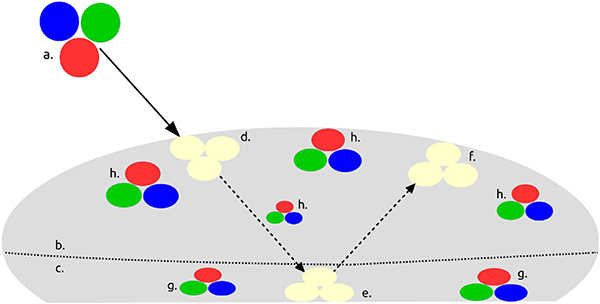By: Dr. Michelle R. Stem
Three-dimensional visible light photonic control is accomplished via the newly identified property of coherent poly propagation (CPP). This property is exhibited by a special silicate that is a rare form of a gemstone found in nature – opal. Dr. Michelle R. Stem discovered and examined several specimens of this material. Her research on this material and it’s properties was published in the peer reviewed journal, PLOS ONE, on October 17, 2019 and found at https://doi.org/10.1371/journal.pone.0223715.
Apart from the iconic play-of-color that is typical of precious opal, these special silicate specimens exhibit the previously unknown property of CPP. CPP allows three-dimensional photonic control over visible light by causing the silicate specimens to perform a special diffraction of many types of incident visible light (mono and polychromatic photon sources). The CPP diffracted light accurately propagates multiple copies of the shape of an incident light source in visible light. The propagated shapes of incident light are able to be moved manually over the surfaces of the three-dimensional silicate specimens. CPP diffracted shapes visibly glide and rotate over the proximal (top) and/or distal (underside) surfaces of the specimen as the specimens are moved under an incident light. Generally, the CPP property causes a specimen to propagate multiple CPP diffracted shapes of a visible light source. While the CPP diffracted shapes sometimes propagate the colors of the incident light, they also sometimes propagate upconverted and/or downconverted incident light colors in the visible spectrum and as the CPP diffracted shapes are made to glide over the surface of a silicate specimen.
Surprisingly, these special silicates also exert a previously unknown photonic axial rotational symmetry on incident light. Yet, an amorphous material, such as opal, is expected to have too random an internal structure to exert a symmetry property. The symmetry operation may allow photonic computational (yes/no or one/zero) signals based on the orientation of the propagated image, in contrast to current electronic/magnetic methods.

Fig 1. Graphical depiction of CPP and PPOI with axial rotation.
a. incident light, b. proximal side, c. distal side, d. incident PPOI, e. rotated transmitted PPOI, f. rotated reflected PPOI, g. rotated transmitted CPP, h. rotated reflected CPP. Dotted lines depict photon flow and demarcation between proximal (top) and distal (underside) sides
The properties of these materials occur under ambient conditions and without the need of external thermal, electrical and photonic (other than the incident light) input. This special opal material does not utilize or emit radiation or any other toxic or dangerous components. Further, the material is made of highly abundant silica.
Materials with the CPP and/or axial symmetry properties have potential applications in many fields, such as security, communications, cryptography, imaging, projections, defense, computers, photonic waveguides, 3-d photonic control, microscopy, fiber optics, photonic wavelength demultiplexing and more:
- Security, communications, cryptography and imaging (including multiple simultaneous wavelength transmissions (simulpathing) of tamper sensitive data, non-repudiation through selective wavelength masking and water-marking of image transmissions by adding or deleting specific wavelengths).
- Projections and defense (including the ability to create real-time false ghost projections of high value assets, such as: military planes in-flight, drones, ground-based and other assets).
- Computers, photonic waveguides and 3-d photonic control (including the simultaneous calculation/verification of critical data in a multi-optical processor environment, corresponding to a photonic version of the multi-electron-based processor systems currently deployed).
- Microscopy (including enabling real-time simultaneous imaging over multiple wavelengths without the time-delay and computational vulnerability of current image processing).
- Fiber optics (including photonic demultiplexing, reduction of signal loss by deployment via the creation of multi-cast capable fiber switches and routers to bypass the current electron conversion step and enable rotational shifting of transmitted fiber optic data with wavelength alteration).
Dr. Stem’s research demonstrates that photons can be controlled over three dimensions in silicate materials by altering the chromaticity of incident light and by changing the relative angle of the material to the viewer and the light source. This discovery is important as a big step towards surpassing some of the limitations of the slower and larger electrons that we currently use. The photonic control demonstrated by this material, particularly regarding CPP and axial symmetry, contradicts common assumptions that opal lacks the ability to display significant photonic properties over a macroscopic volume. A primary goal of future research will be to develop refined materials that display improved CPP and axial rotation properties so as to implement 3-d photonic control in devices.





If it has that propertyThis special opal material does not utilize or emit radiation or any other toxic or dangerous components. Further, the material is made of highly abundant silica.it could be applied as biosensors, teranosic applicators for the fight against cancer and neurodegenerative diseases, expressed in quantum bits although silica is not biodegradable
Can this material be used in organic chemistry for organic cosmetics